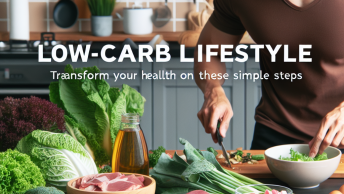10 Steps to an Effective Fat Loss Meal Plan
Achieving and maintaining a healthy weight is a goal for many, and with the right meal plan, fat loss can become a straightforward process. A well-structured meal plan not only aids in shedding extra pounds but also boosts overall health, energy levels, and well-being. Here’s a comprehensive listicle to guide you in crafting an effective fat loss meal plan.
1. Understand Your Caloric Needs
Before embarking on any meal plan, it’s essential to understand your daily caloric needs. This can vary based on age, gender, activity level, and metabolic rate. Use a reliable online calculator or consult with a health professional to determine the number of calories you should consume daily to promote fat loss.
2. Prioritize Whole Foods
Whole foods are your best friends on any fat loss journey. Opt for fresh fruits, vegetables, lean meats, whole grains, and nuts. These foods are minimally processed and rich in nutrients, helping you feel satisfied and energized throughout the day.
3. Balance Macronutrients
A balanced intake of carbohydrates, proteins, and fats is crucial. Aim for a plate with 45-65% carbs, 10-35% protein, and 20-35% fats. Carbs should mostly come from vegetables and whole grains, while proteins should be lean like chicken, fish, or legumes. Healthy fats from avocados, nuts, and olive oil are also vital.
4. Control Portion Sizes
Mindful eating starts with portion control. Use smaller plates and be conscious of serving sizes. By focusing on portions, you’re more likely to avoid overeating, a common pitfall in weight loss endeavors.
5. Hydrate, Hydrate, Hydrate
Water plays a crucial role in fat loss. It boosts metabolism, helps with appetite control, and flushes out toxins. Aim for at least 8 cups of water a day, and consider drinking a glass before meals to curb excessive hunger.
6. Plan and Prep Meals
Pre-planning meals prevents last-minute unhealthy food choices. Set aside time each week to plan your meals, then prepare them in advance. Meal prepping ensures you have nutritious options ready, reducing the temptation to reach for fast food or unhealthy snacks.
7. Incorporate Intermittent Fasting
Intermittent fasting can be a powerful tool for fat loss. This eating pattern alternates between eating periods and fasting periods, which can help reduce calorie intake naturally and may improve metabolism. Consider methods like the 16/8 or the 5:2 approach for best results.
8. Limit Sugar and Refined Carbs
Sugar and refined carbs can stand in the way of your fat loss goals. They cause insulin spikes and can lead to increased fat storage. Opt instead for complex carbs and natural sweeteners. Monitor your sugar intake and be mindful of hidden sugars in processed foods.
9. Eat Mindfully
Mindful eating is about savoring each bite and listening to your body’s hunger cues. Slow down, enjoy your meals without screens or distractions, and pay attention to feelings of fullness. This practice can significantly contribute to a healthier relationship with food and better weight management.
10. Customize and Adapt
No one-size-fits-all plan exists due to our unique bodies and lifestyles. Customize your meal plan to fit your preferences, dietary restrictions, and fitness goals. Regularly evaluate your progress and be willing to make changes. Remember, flexibility is key in ensuring long-term adherence and success.
For those looking to dive deeper or find ready-made, expert-backed meal plans tailored to fat loss, you can explore additional resources. Click Here to learn more. This resource provides access to comprehensive guides and meal plans that can further aid in your journey to a healthier you.
Conclusion
Crafting an effective fat loss meal plan doesn’t have to be daunting. By understanding your body’s needs and making conscious food choices, you can create a sustainable plan that suits your lifestyle. Embrace the journey, stay committed, and remember, achieving your fat loss goals is not just about losing weight — it’s about gaining health and enjoying a better quality of life.






